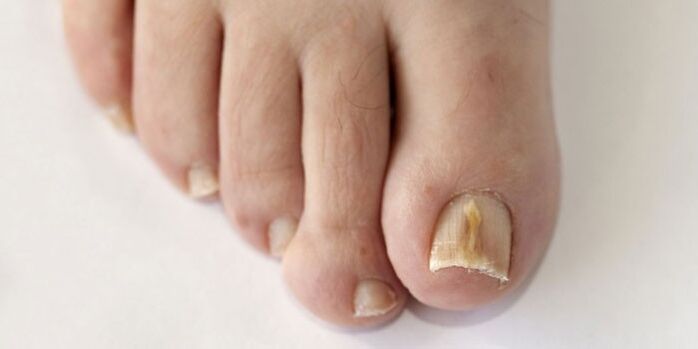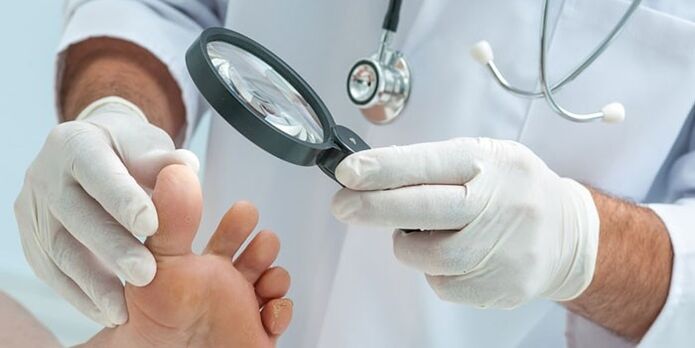Many do not even suspect that sweating, an unpleasant odor pursues them due to onychomycosis.This is a treacherous disease that takes a long time and does not always carry a hundred percent result.For effective treatment of the disease, it is necessary to identify the signs of nail fungus as quickly as possible, which are applied to the nails, legs and legs.
What is nail fungus
An infectious disease caused by mushrooms and yeast -like fungi is called onychomycosis.According to WHO statistics, 5 to 15% of the globe population suffers from the disease.Microorganisms affect the nails, changing its color, shape and hardness.Dermatologists have noted frequent cases of diseases among both adults and children.In case of improperly selected treatment, severe complications may occur to gangrene.
The infection occurs due to non -compliance with the rules of personal hygiene, high humidity in baths and saunas and mechanical injuries.Regular contact with detergents, water causes the disease to develop.Flat legs and narrow gaps between the fingers increase the risk of the disease.The fungus is more common in people with weakened immune system, then other organs are also infected with a fungal infection.

What does the fungus look like
If you are interested in how to determine the sponge on the toenails, look at the free edge and the mouth of the mouth at the end of the toes.With a distal linear form of the disease, the nail turns into a yellow shade and the plate is not transparent.The second degree of pathology is characterized by hyperkeratosis.The disease is manifested by the keratinization of the nails, which becomes much more child than the healthy organ.The last stage is characterized by dystrophy, defeat of the matrix.
Symptoms
Few people pay attention to the initial symptoms of onychomycosis.The earlier you notice the disease, the more effective the treatment will be.Symptoms of nail fungus:
- change in the integrity of the nail;
- change in the color of the plate;
- Relaxation of the nail phalanx;
- The pain that occurs with the development of pathology;
- Itching of the skin, burning around the affected area.
Nail plaque
The appearance of white spots is one of the first signs of nail fungus.The plaque can look like round spots of different sizes, longitudinal stripes or cover the entire nail bed.If you notice changes in the surface of the mouth at the end of your fingers, see an urgent doctor, self -governing can lead to negative effects on your health.
Signs
The disease causes several types of pathogens that manifest themselves in different ways.Depending on the nature of the microorganism, the signs of the fungus on the toenails will differ:
- Maya.In this type of pathogen, the disease can be recognized after a long time.Peeling appears, but itching of the skin near the affected area may be absent.
- Mold.It is found in 1% of patients, more commonly developed in patients with HIV infection.
- Dermatophytes.The most common cause of the disease that causes nail tightening, its delays.The pathogenic organism also affects the legs and legs, can spread to interdigital folds.In most cases, the thumb and a small finger amazed.

The first signs
Most people do not notice how the fungus begins.Symptoms appear when the greater part of the nails is damaged.Almost immediately, the infection can only be seen in the steps.Between the fingers begins to blush and peel the skin, itching happens.Gradually, a deeper lesion of the skin occurs to the formation of cracks.An important sign of the disease is a change in the color and structure of the plate.It becomes fragile, constantly damaged, which causes significant pain.
How different types of onychomycosis are manifested
This disease of the lower limbs has no clinical picture.How the nail fungus manifests itself on the legs depends on the type of disease.To obtain the maximum treatment result, doctors distinguish the following varieties of fungi:
- Normorophic.At the onset of the disease, the color of the diseased plate changes as the thickness and natural shine remain unchanged.There are yellow or white spots on the side of the plate.Gradually the nail completely changes color, but its thickness remains normal.With this form of the disease, onycholysis is observed - the inability of the plate to grow to the nails.
- Hypertrophic.This type of disease is diagnosed by thickening the plate.Scales begin to grow under the nail.The plate fades, begins to break, the color becomes gray or dark yellow.One can experience pain when walking.
- Atrophic.This type of disease is characterized by a change in the color of the plate to the brownish gray.The nail loses shine, the plate is gradually destroyed.The last stage of this type of onychomycosis is manifested by the complete destruction of the nails, its necrosis.Atrophy occurs at the outer end to the growth zone.
Treatment
The modern pharmaceutical industry offers many remedies for the treatment of fungi.Local and general medicines are used.Only a specialist can choose medicines after a series of tests.Before prescribing the medicine, the doctor evaluates the following factors of the disease at the appointment:
- Duration of the disease;
- inflammation area;
- the nature of pathological changes;
- The presence of other pathologies.
If the disease is in an advanced stage or develops very quickly, then antibiotics should be used for treatment.Tablets for the treatment of dysbiosis cannot be taken with liver or kidney pathologies, children.Before you begin treatment, you should carefully familiarize yourself with the pharmacological compatibility of the medicines taken.
Commonly used products that should be applied directly to the affected nail.It is recommended to treat the skin with hydrogen peroxide or alcohol in advance.Disinfectant shoe sprays must be used to eliminate completely pathogenic germs.The course of treatment takes several months.

















